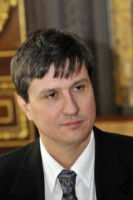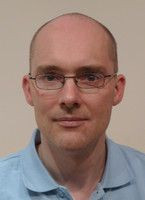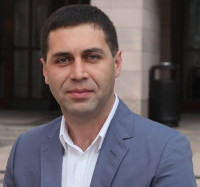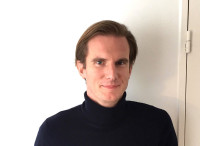Socio-economy & New Tech
Artificial Intelligence & Emerging Technologies
Quantum Computing & Quantum Technologies
AXA Chairs
France
2008.12.09
Chair AXA - IHES in Mathematics
Going beyond the intersection of mathematics and theoretical physics
What are the fundamental, indivisible components of the world around us? This question has obsessed physicists since Einstein spent the last 30 years of his life searching for a “unified field theory”: one master equation to explain all of nature’s forces. One candidate for the “theory of everything” is string theory, which posits that our universe is made up of vibrating filaments of energy whose various frequencies produce electrons, quarks and all other particles.
Professor Maxim Kontsevich has opened up radically new perspectives in string theory through his work at the intersection between pure mathematics and theoretical physics. His mathematical proof of physicist Edward Witten’s amazing conjecture based on string theory was one of the topics for which he earned the Crafoord Prize in 2008.
Yet the interests of this 1998 Fields Medallist and Institut de France member go far beyond string theory. “I’m really interested in mathematical physics, but I also work on algebra, geometry, number theory, dynamical systems and other fields,” Professor Kontsevich says. “Mathematics is a very beautiful world, full of very remarkable objects and structures. They behave in a perfect way, something that is not obtainable in the real world.”
For almost 20 years, his work has focused on the concept of homological mirror symmetry. “This extremely rich subject is one of the most wonderful things to happen in mathematics in decades,” Professor Kontsevich explains. “It unites dozens of different areas and related subjects, such as symplectic geometry, algebraic geometry, triangulated categories and cluster transformations.”
Homological mirror symmetry is so complex, however, that even many mathematicians do not understand it. “When I came up with this idea, it was very hard to explain it to other people. Nobody was fluent in all these areas simultaneously,” he says. “It took several years for homological mirror symmetry to gain ground, and then some young people came along who learned it very easily. Now we have quite a big community.”
Currently, Professor Kontsevich is exploring the relationship between homological mirror symmetry and classical objects such as integral systems in mechanics (e.g., rotating bodies like tops). He is also looking at the concept’s implications for quantum mechanics problems such as how to calculate spectrum. “I’m interested in these nice topological and homological mirror symmetry interpretations for completely classical questions,” he says.
Professor Kontsevich joined the faculty of France’s Institut des Hautes Etudes Scientifiques (IHES)—an institute for advanced research in mathematics, theoretical physics and any related scientific field—in 1995, after two years at the University of California, Berkeley. He credits the institute for enabling him to pursue such a wide range of subjects. “IHES is a fantastic place, one of the two best in my profession,” he says. “Freed from most of the usual pressures of academic life, I can concentrate entirely on the research topics of my choosing.”
Founded in 1958, the institute offers exceptionally talented scientists a place where they can devote themselves to their research and invite visitors to come and work together. It is dedicated to the liberty of research, the quest for excellence, interactivity, and scientific and human diversity. With a permanent faculty of five professors and 250 visiting academics per year, IHES has become a reference point for greatness in the international scientific community. Among its significant achievements are its researchers’ seven Fields Medals, a total unequalled by any other institution or indeed by many countries: Germany and Italy, for instance, only have one each.
IHES benefits from its location in the Ile-de-France region, which has the greatest concentration of mathematicians in the world (1,500 out of 80,000 globally). The region is also home to a number of other world-class academic institutions, including Ecole normale supérieure – Paris, Ecole normale supérieure – Cachan, and Ecole polytechnique.
By creating the permanent AXA Chair of Mathematics, the AXA Research Fund helps ensure the continuing eminence of IHES and supporting the work of one of the world’s top mathematicians. “The Chair contributes greatly to the financial stability of the institute, which is very important,” Professor Kontsevich says, “and it enables me carry out my research under the best possible conditions.”
What are the fundamental, indivisible components of the world around us? This question has obsessed physicists since Einstein spent the last 30 years of his life searching for a “unified field theory”: one master equation to explain all of nature’s forces. One candidate for the “theory of everything” is string theory, which posits that our universe is made up of vibrating filaments of energy whose various frequencies produce electrons, quarks and all other particles.
Professor Maxim Kontsevich has opened up radically new perspectives in string theory through his work at the intersection between pure mathematics and theoretical physics. His mathematical proof of physicist Edward Witten’s amazing conjecture based on string theory was one of the topics for which he earned the Crafoord Prize in 2008.
Yet the interests of this 1998 Fields Medallist and Institut de France member go far beyond string theory. “I’m really interested in mathematical physics, but I also work on algebra, geometry, number theory, dynamical systems and other fields,” Professor Kontsevich says. “Mathematics is a very beautiful world, full of very remarkable objects and structures. They behave in a perfect way, something that is not obtainable in the real world.”
For almost 20 years, his work has focused on the concept of homological mirror symmetry. “This extremely rich subject is one of the most wonderful things to happen in mathematics in decades,” Professor Kontsevich explains. “It unites dozens of different areas and related subjects, such as symplectic geometry, algebraic geometry, triangulated categories and cluster transformations.”
Homological mirror symmetry is so complex, however, that even many mathematicians do not understand it. “When I came up with this idea, it was very hard to explain it to other people. Nobody was fluent in all these areas simultaneously,” he says. “It took several years for homological mirror symmetry to gain ground, and then some young people came along who learned it very easily. Now we have quite a big community.”
Currently, Professor Kontsevich is exploring the relationship between homological mirror symmetry and classical objects such as integral systems in mechanics (e.g., rotating bodies like tops). He is also looking at the concept’s implications for quantum mechanics problems such as how to calculate spectrum. “I’m interested in these nice topological and homological mirror symmetry interpretations for completely classical questions,” he says.
Professor Kontsevich joined the faculty of France’s Institut des Hautes Etudes Scientifiques (IHES)—an institute for advanced research in mathematics, theoretical physics and any related scientific field—in 1995, after two years at the University of California, Berkeley. He credits the institute for enabling him to pursue such a wide range of subjects. “IHES is a fantastic place, one of the two best in my profession,” he says. “Freed from most of the usual pressures of academic life, I can concentrate entirely on the research topics of my choosing.”
Founded in 1958, the institute offers exceptionally talented scientists a place where they can devote themselves to their research and invite visitors to come and work together. It is dedicated to the liberty of research, the quest for excellence, interactivity, and scientific and human diversity. With a permanent faculty of five professors and 250 visiting academics per year, IHES has become a reference point for greatness in the international scientific community. Among its significant achievements are its researchers’ seven Fields Medals, a total unequalled by any other institution or indeed by many countries: Germany and Italy, for instance, only have one each.
IHES benefits from its location in the Ile-de-France region, which has the greatest concentration of mathematicians in the world (1,500 out of 80,000 globally). The region is also home to a number of other world-class academic institutions, including Ecole normale supérieure – Paris, Ecole normale supérieure – Cachan, and Ecole polytechnique.
By creating the permanent AXA Chair of Mathematics, the AXA Research Fund helps ensure the continuing eminence of IHES and supporting the work of one of the world’s top mathematicians. “The Chair contributes greatly to the financial stability of the institute, which is very important,” Professor Kontsevich says, “and it enables me carry out my research under the best possible conditions.”
One step closer to the theory of everything
To add or modify information on this page, please contact us at the following address: community.research@axa.com

Maxim
KONTSEVITCH
Institution
Institut des Hautes Études Scientifiques
Country
France
Nationality
Russian


